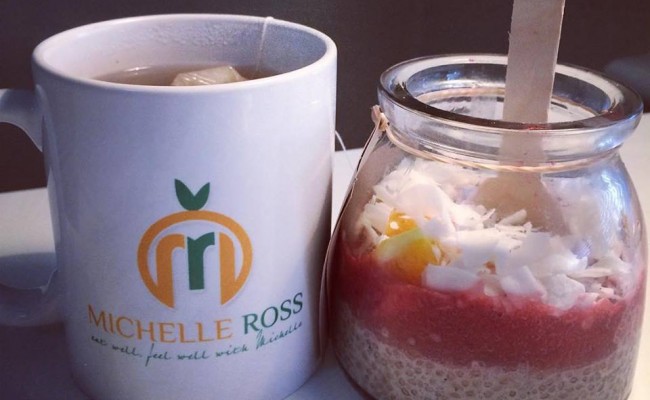Michelle Ross Clinical Nutritionist

Kids’ Portion Sizes
‘What to feed the kids’ is certainly an area of parenting that takes up an enormous amount of time and can cause Mums & Dads plenty of stress.
My take-home message is simple: use the table of suggested portion sizes as a guideline. Feed your kids the most nutrient dense foods out of each food group—fresh, whole fruit over canned; whole grains, a rainbow of vegetables, chicken, fish, meat, eggs and full fat dairy.
The Australian government has set RDIs, the Recommended Dietary Intakes, which are essential nutrients that need to be eaten daily to meet the known nutritional needs of healthy people. The RDIs are set by the National Health and Medical Research Council, based on available scientific knowledge.
The guidelines are looked at every 5 years and revised every 10 years. I have a problem with this as nutritional research uncovers new and sometimes conflicting information much sooner than every 10 years! Read on to discover the best choices for your family.
Vegetables the sooner you can explain how important vegetables are to our health and get the kids on board trying the rainbow of veggies available, the better! Most kids do really well with the starchy vegetables: corn, pumpkin, potatoes so try to encourage greens, zucchini, carrot, beetroot, snow peas, and the cruciferous veggies: broccoli (fairy trees), cauliflower (snow trees), Brussels sprouts, etc. The key with veggies is to try all different ones in different ways: stir fried, steamed, baked, and roasted.
Legumes and beans are quite hard for us to digest so unless you’re vegetarian, I would introduce them slowly, when the kids are a bit older and sneak them into casseroles to start! There are some great ‘treat recipes’ on vegan websites that incorporate things like black beans into brownies, making them so much healthier than the typical white flour/sugar/butter brownies most of us grew up with!
Fruit is sweet, juicy, colourful and usually pretty easy to feed kids. Steer clear of canned fruits. There’s just no goodness, no life-force in them. Unless the can is clearly labelled PABA-free then it’s lined in plastic which leeches into the contents in the canning process. With so much abundance of fruit in our grocery stores, we don’t need canned fruit (or veg) in our kids’ diets.
Grains should be whole grains like oats, quinoa (which is actually a seed but used in recipes as a grain) and brown rice. There is no nutritional comparison between a good sourdough whole grain bread and plain white bread. You’ll save untold tummy misery with your kids if they never taste anything made with white flour or white sugar! Both raise glucose and insulin levels in the blood and create cravings for more, which is why food manufacturers direct the stuff at kids! Eating white bakery products can produce a high in kids like sugar does which has been compared to a cocaine-high so for tantrum-free fun, make more nutritious choices. You can still prepare your favourite recipes with slight tweaks like buckwheat pancakes or quinoa thrown into soup or a casserole in place of white rice provides a tastier, chewier, more nutrient-dense choice for your whole family.
Lean meats and dairy products are what the current government recommendations include but once the government agencies catch up with the latest science, they will advise you to eat full-fat dairy, oily fish and chicken skin. These foods are as nature intended, before man’s meddling with them! Many people drink milk for the calcium and vitamin D components. Calcium needs vitamin D for absorption and vitamin D is a fat-soluble vitamin, meaning it needs fat present to be absorbed by the body. If you drink low-fat or skinny milk, guess what? You won’t be getting the imagined benefits from it.
The scientific community is influencing what medical doctors are now telling their patients—good fats (olives, avocado, butter-yes butter!, coconut oil, unprocessed nuts) are good for us and needed for optimum health. Please don’t feed your children low-fat anything. When manufacturers remove fat, they remove flavour and often replace fat with sugar and fillers, activating our sweet tooths and creating cravings for the food.
When considering kids portion sizes, remember, not all portions are created equal. Some are more nutrient dense than others and these are much better for our children. If you’re going to spend time cooking, you may as well get the biggest nutritional bang too! Use these guidelines as guidelines and start or continue a conversation with your children around eating to make their bodies strong and their brains smart! This starts and ends with whole foods.
M xx







Comments
You cannot post comments until you have logged in,and that you have an appropriate permission level. Login Here.